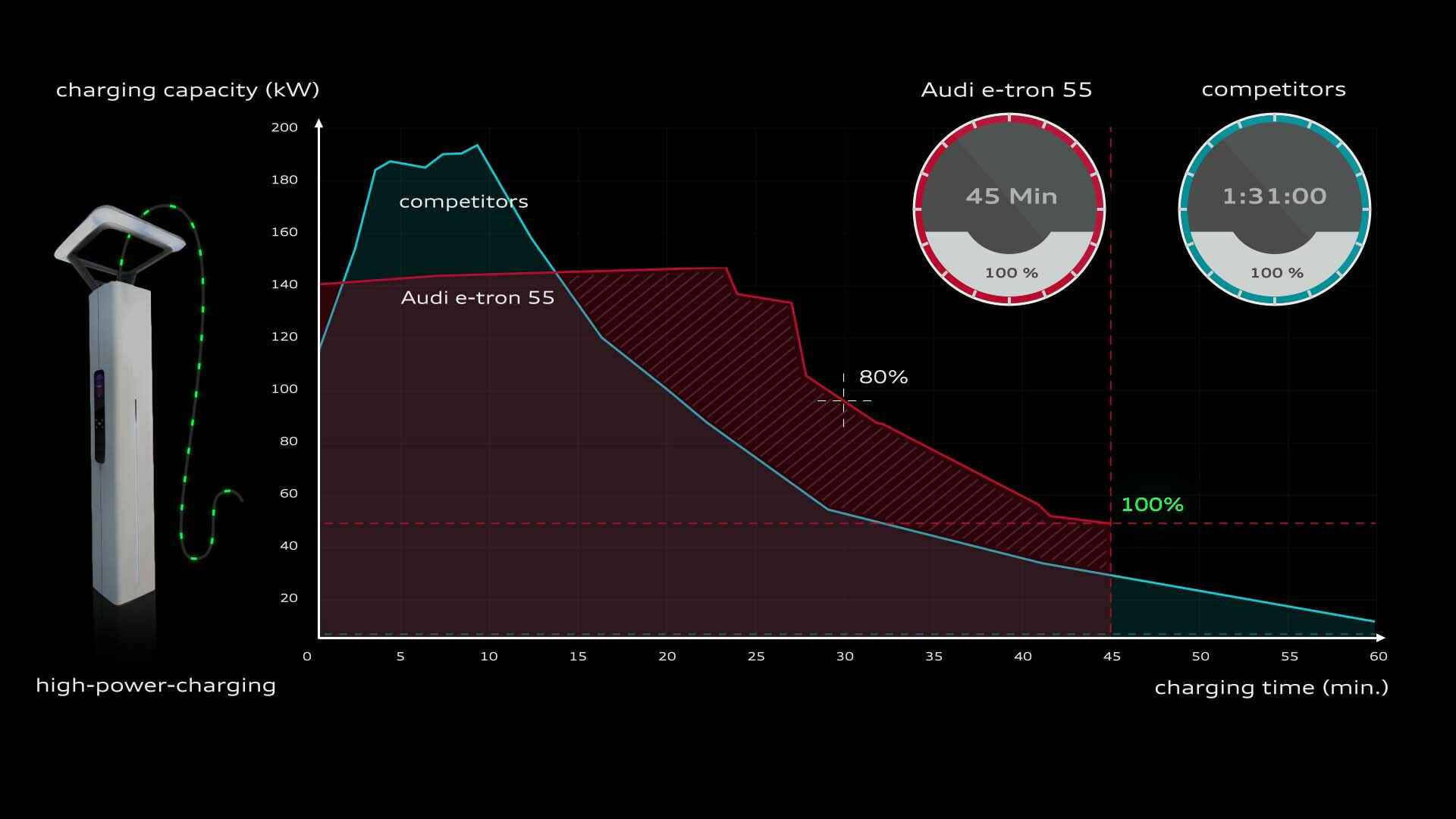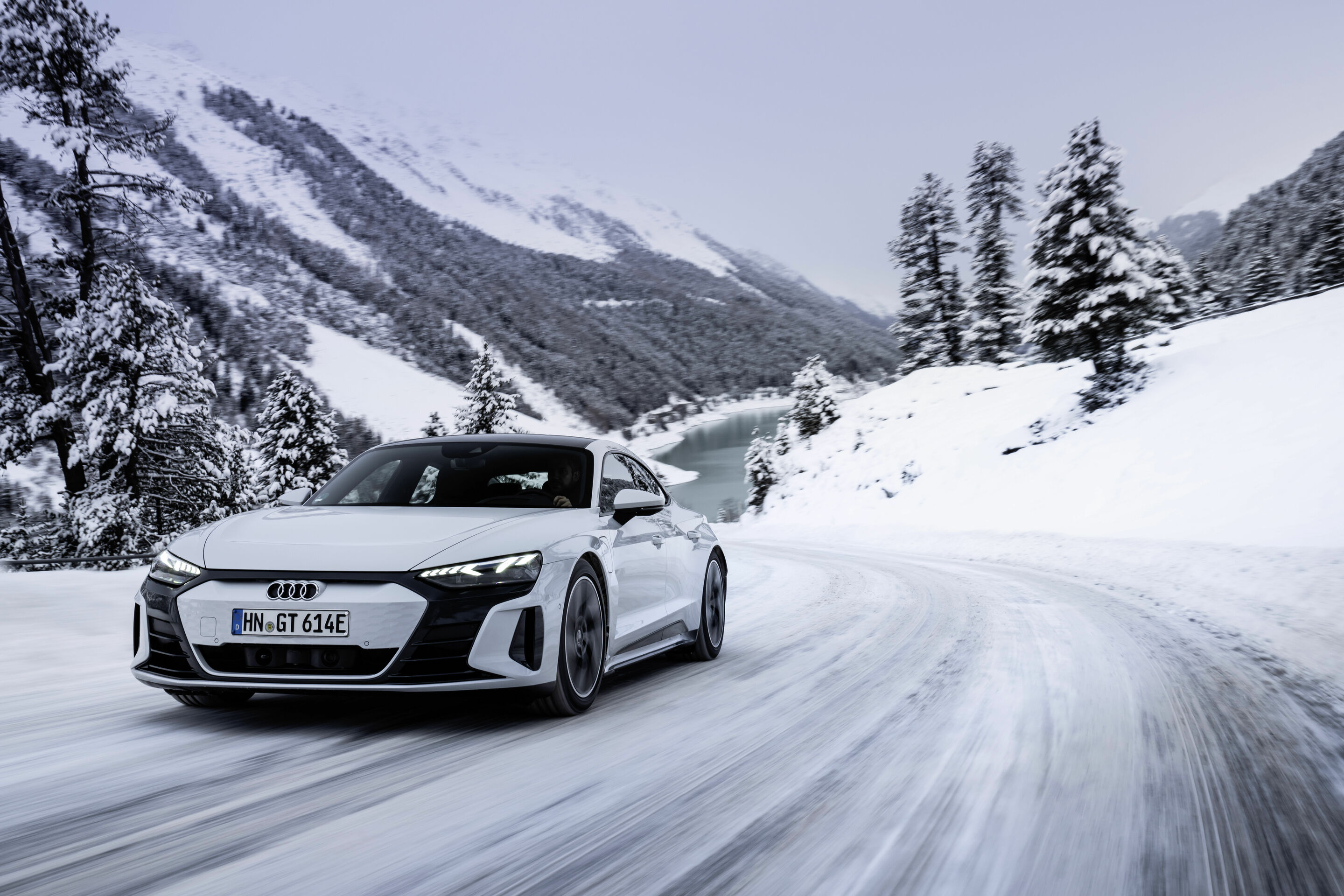Search
All search results for "ladeperformance"
(3)

When designing and developing the high-voltage (HV) battery for the Premium Platform Electric (PPE), Audi prioritized both range and charging performance. Sophisticated thermal management for the battery, an 800-volt electrical system, and a wide range of efficiency measures around the new electric motors make driving and charging a carefree experience. The Audi charging service and, last but not least, the Audi charging hub fast charging network in urban environments, which is becoming increasingly dense, also contribute to this.

The charging process is central to the everyday usability of an electric car. The shorter the stop required for charging the higher the customer’s satisfaction. Drivers of a fully electric Audi model thus benefit from high charging speeds because the charging capacity of up to 150 kW is available for a large portion of the charging procedure. This enables sophisticated thermal management of the lithium-ion battery. In order to assess the everyday usability of an electric car, customers should take not just the nominal maximum charging capacity but also the charging speed into account.

Seat heating instead of a hot air blower, optimum tire pressure, parking in the garage, and selecting the efficiency mode: these and other factors determine how quickly the high-voltage battery is drained – or not. What can Audi customers do beyond the established tips to keep the high-voltage battery in their e-tron model working efficiently during the winter and to achieve optimal range?